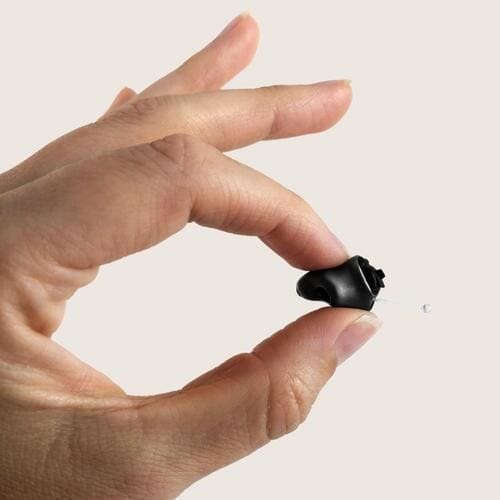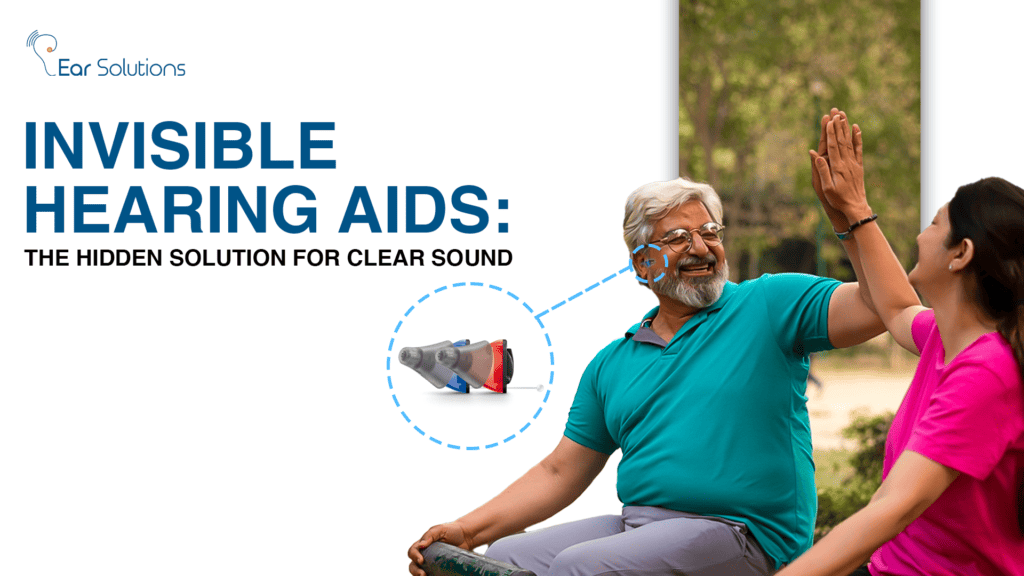Invisible hearing aids, also known as invisible-in-the-canal (IIC) hearing aids, are discreet and effective solutions for individuals dealing with hearing loss. Unlike traditional hearing aids that are visible, invisible hearing aids are virtually undetectable. These devices offer wearers a high level of discretion and comfort without compromising on sound quality. In this blog, we will explore the world of invisible hearing aids, how they work, their benefits, and much more.
Introduction to Invisible Hearing Aids
Invisible hearing aids are designed to fit deep inside the ear canal, making them almost invisible to others. They are custom-made to fit the wearer’s ear canal perfectly, ensuring a comfortable and secure fit. Despite their small size, invisible hearing aids are capable of providing the same level of amplification as larger and more visible hearing aids.
How Do Invisible Hearing Aids Work?
Invisible hearing aids work by capturing sound through a microphone and processing it using advanced digital technology. The processed sound is then delivered to the ear through a tiny speaker, which is also fitted into the device. The result is a clear, natural sound that is customized to the wearer’s specific hearing needs.

Benefits of Invisible Hearing Aids
There are several benefits to using invisible hearing aids, including:
Discreetness: Invisible hearing aids are virtually invisible when worn, making them ideal for individuals who want a discreet hearing aid solution.
Comfort: Because they are custom-made to fit the wearer’s ear canal, invisible hearing aids are comfortable to wear for extended periods.
Natural Sound: Invisible hearing aids provide clear, natural sound that is customized to the wearer’s specific hearing needs.
Improved Quality of Life: By improving the wearer’s ability to hear, invisible hearing aids can significantly improve their quality of life.
Who Can Benefit from Invisible Hearing Aids?
Invisible hearing aids are suitable for individuals with mild to moderate hearing loss who want a discreet hearing aid solution. They are also suitable for individuals seeking a comfortable and easy-to-use hearing aid option.
Factors to Consider Before Getting Invisible Hearing Aids
Before getting invisible hearing aids, it is essential to consider the following factors:
Degree of Hearing Loss: Invisible hearing aids are suitable for individuals with mild to moderate hearing loss. Individuals with severe hearing loss may require a different type of hearing aid.
Ear Canal Size: The size and shape of the ear canal will determine the suitability of invisible hearing aids. Individuals with small or unusually shaped ear canals may not be suitable candidates.
Lifestyle: Consider your lifestyle and the environments in which you will be wearing your hearing aids. Some models of invisible hearing aids may be more suitable for active lifestyles than others.
How to Choose the Right Invisible Hearing Aid?
Choosing the right invisible hearing aid involves considering factors such as:
Degree of Hearing Loss: The severity of your hearing loss will determine the type and power of the hearing aid you need.
Lifestyle: Consider your daily activities and environments to determine the features you need in a hearing aid, such as noise cancellation or Bluetooth connectivity.
Budget: Set a budget and look for hearing aids that fall within your price range while still meeting your needs.
How to Maintain and Care for Invisible Hearing Aids?
Proper maintenance and care are essential to ensure the longevity and performance of your invisible hearing aids. Follow these tips:
- Clean your hearing aids regularly using a soft, dry cloth or a hearing aid cleaning kit.
- Avoid exposing your hearing aids to moisture or extreme temperatures.
- Store your hearing aids in a dry, cool place when not in use.
- Schedule regular check-ups with your audiologist to ensure your hearing aids are working correctly.
Common Misconceptions About Invisible Hearing Aids
There are several common myths about invisible hearing aids, including:
They are not powerful enough to treat severe hearing loss: While invisible hearing aids are typically designed for mild to moderate hearing loss, there are models available that can treat more severe hearing loss.
They are uncomfortable to wear: Invisible hearing aids are custom-made to fit the wearer’s ear canal, making them comfortable to wear for extended periods.
They are expensive: While invisible hearing aids may be more expensive than traditional behind-the-ear hearing aids, they can be purchased on EMI without putting a load on your pocket.
Conclusion
Invisible hearing aids offer a discreet and effective solution for individuals with hearing loss. Their small size and advanced technology make them a popular choice among those looking for a comfortable, easy-to-use hearing aid option. If you think invisible hearing aids might be right for you, talk to your audiologist to learn more about your options.
FAQs
Q1: Are invisible hearing aids suitable for all types of hearing loss?
Invisible hearing aids are typically designed for mild to moderate hearing loss. Individuals with severe hearing loss may require a different type of hearing aid.
Q2: How much do invisible hearing aids cost?
The cost of invisible hearing aids can vary depending on the brand, model, and features. However, they are often more expensive than traditional behind-the-ear hearing aids. You can purchase these devices from the Ear Solutions hearing aid clinic as we offer the best EMI options in India.
Q3: How long do invisible hearing aids last?
With proper care and maintenance, invisible hearing aids can last several years. However, they may need to be replaced sooner if they are not properly cared for.
Q4: Can I wear invisible hearing aids while sleeping?
It is not recommended to wear hearing aids while sleeping. It is essential to give your ears a break and allow them to breathe.
Q5: Can I shower or swim with invisible hearing aids?
No, it is not recommended to expose your invisible hearing aids to moisture. It can damage the internal components and affect their performance.

Raushan Singh
Senior Audiologist, Ear Solutions
Raushan Singh is a Senior Audiologist at Ear Solutions, dedicated to delivering high-quality, patient-centric hearing care. With a strong clinical focus, he works closely with individuals to assess hearing challenges and provide personalized solutions that help them hear to their fullest potential.
At Ear Solutions, Raushan plays a key role in advancing the organization’s mission of transforming lives through better hearing. Since 2011, Ear Solutions has been committed to raising hearing awareness and improving outcomes through expert care and advanced technology – driven by the belief that #AbSabSunenge.





